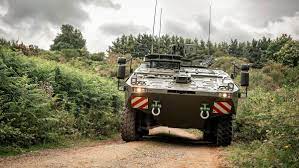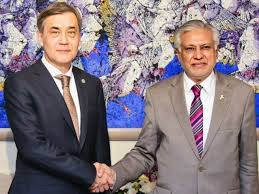UK voices frustration with Boxer manufacturers over supply chain delays

London: An official with the United Kingdom’s military procurement arm today criticized Boxer Mechanised Infantry Vehicle (MIV) manufacturers for “seemingly choosing not to seize the initiative” when confronting supply chain delays that continue to disrupt the 8×8 program.
A Defence Equipment and Support (DE&S) official, speaking on condition of anonymity at the IQPC International Armoured Vehicles conference in London today, said that while they had “some sympathy for industry covering excessive supply chain challenges” caused by COVID-19 and cyber hacking, manufacturers only reacted after feeling an “impact.”
The official suggested a better response should have seen industry “seeking to minimize” supplier problems ahead of time, not only at the point of “impact.”
“This is the view of the customer, and [could be] ultimately interpreted by the warfighter as unfairly damaging the reputation of the vehicle,” added the official.
Alexander Abeler, managing director of Artec, the Rheinmetall Landsysteme-Krauss-Maffei Wegmann (KMW) joint venture that makes Boxer, acknowledged to Breaking Defense that COVID-19 and the war in Ukraine had caused supplier delays, with the conflict in particular leading to a huge spike in demand and increased “global competition” for vehicle parts.
He said, however, that industrial progress has been made at UK Boxer production lines in Telford and Stockport, with drive module welding “doing quite well” and mission module activities moving forward as planned.
The British Army announced last month that it had received two Boxer prototypes which are currently undergoing vehicle trials.
A new constellation with laser comms and compatibility with the Space Development Agency’s Proliferated Warfighter Space Architecture is now taking shape.
An acquisition decision by the UK Ministry of Defence on newer variants, in addition to a mix of infantry carrier, specialist carrier, command post carrier and ambulance variants already under order, is expected shortly, according to a presentation delivered by a British Army official.
Abeler confirmed that London is “in the process” of addressing the newer variant acquisition decision.
More broadly, the UK has decided against procuring close to an additional 400 vehicles, despite allocating funding for 1,016 platforms last year. A reduced figure has since been declared because of affordability issues, but several hundred are set to be ordered, according to the British Army presentation.
Abeler confirmed that London is “in the process” of addressing the newer variant acquisition decision.
“We get it [new technology] first, and we make sure it is viable in the field,” Sgt. Maj. A. told Breaking Defense.
An Artec official told Breaking Defense last year that expanded Boxer production offered an opportunity to produce 200 vehicles a year across Europe, dependent on suppliers keeping “the pace” of industrial planning. It is unclear if that production rate was achieved, though a ramp up is expected to occur this year, according to the British Army presentation.
Britain rejoined the Boxer program in 2019, pledging £2.8 billion ($3.6 billion) for the program and has so far ordered 623 vehicles which are due to be integrated into new Armoured Brigade Combat Teams, alongside Ajax armored fighting vehicles and Challenger 3 main battle tanks.
The future combat teams are specifically designed to “deploy rapidly over long distances and then operate across varied terrains,” with Boxer expected to first enter service in 2025.
Platforms like Boxer, Ajax and Challenger 3 are critical to the British Army’s Future Solider modernization program, introduced so the service can become “more global in its perspective, its operations and its partnerships,” though such aspirations look out of step with a plan to cut service numbers to 72,500 next year, ending a previous target of 82,000.





